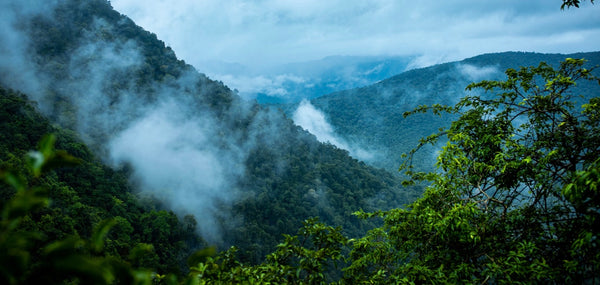
Get news, updates, & event Info delivered right to your inbox:
10 Amazing Animals That Live In Our World’s Rainforests
Rainforests are commonly referred to as the lungs of our planet. The Amazon Rainforest alone produces about 16 percent of the oxygen we breathe. The diversity of life in our world’s rainforests is truly astonishing, and ensuring these biodiversity hotspots remain for generations to come is critical.
Some of the world’s most unique animals live in rainforests, and they depend on the layered habitat provided by these ecosystems for survival. We work hard to protect and restore rainforests around the world to benefit communities, safeguard and protect wildlife from climate change impacts, and more.
Let’s take a closer look at 10 rainforest animals that play important roles in the preservation of Earth’s lungs!
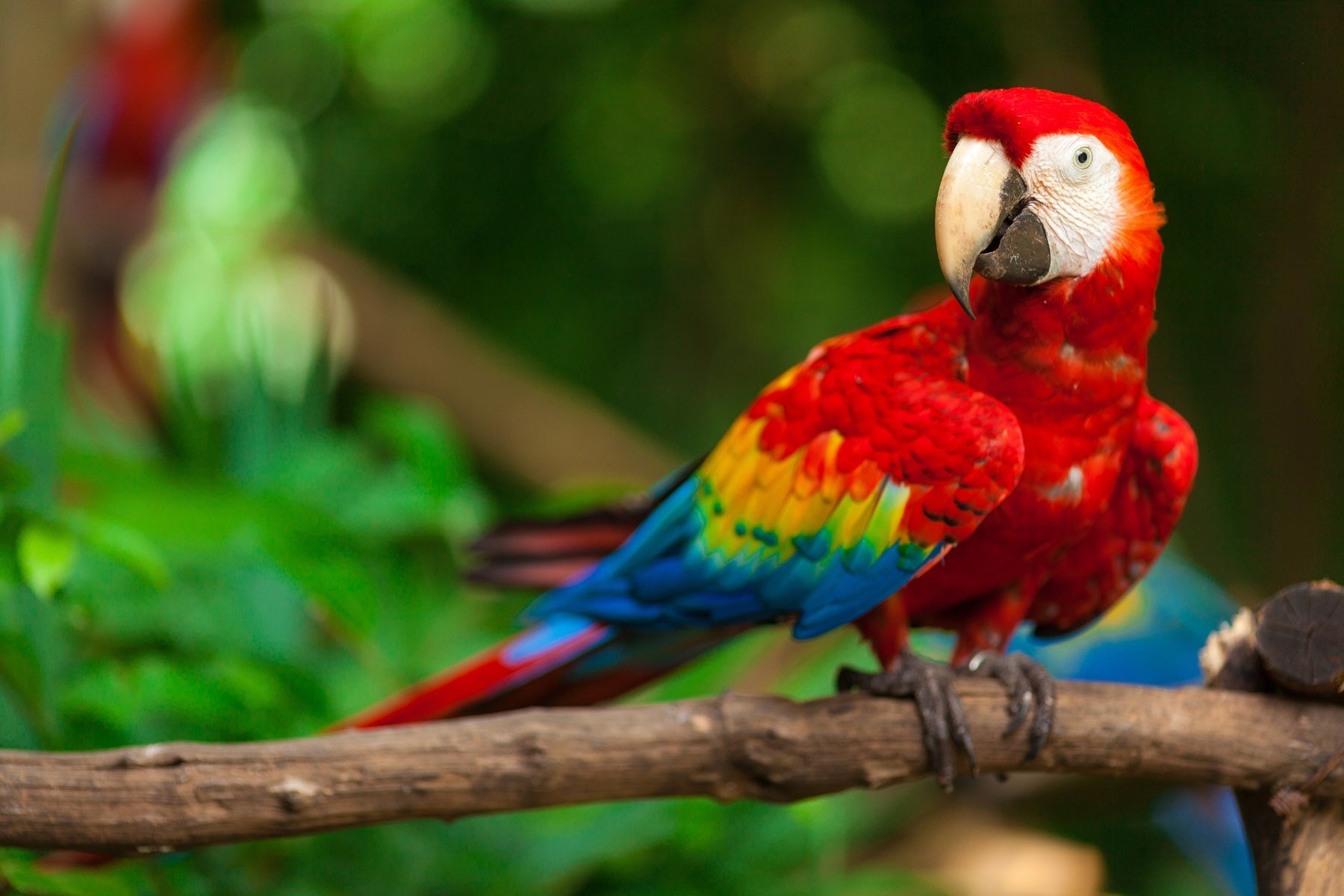
1. Scarlet Macaw
The scarlet macaw is known for its vibrant plumage. With splashes of bright yellow and brilliant blue, most of the macaw’s body is a startling red color that is sure to draw your attention. These colorful birds can be found in many areas across Latin America with thick, dense rainforests, ranging from Mexico and Peru to Eastern Brazil.
They often spend their days in tall, deciduous trees that hug close to rivers and other bodies of water. Scarlet macaws are known to be one of the smartest birds in the world, and they are also among the largest parrots.
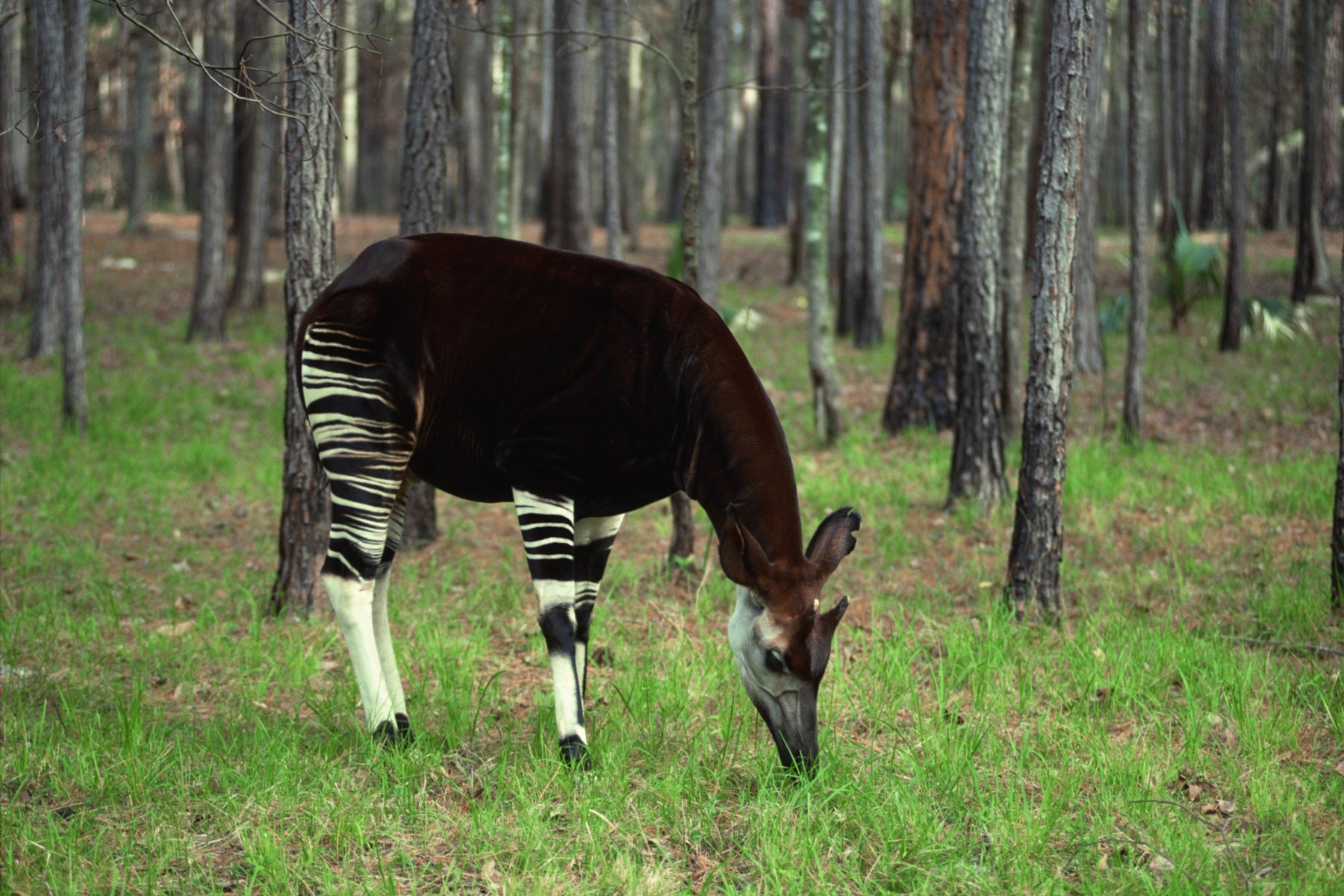
2. Okapi
Okapi are incredibly unique animals that can be found in rainforests of the Democratic Republic of the Congo. Commonly referred to as “forest giraffes,” okapi appear to be a cross between a zebra and deer. Their hind legs are covered in zebra-like stripes, and the rest of their body is a deep brown. They are the giraffe’s last living relatives.
The okapi is considered endangered, according to the International Union for Conservation of Nature’s (IUCN) Red List of Threatened Species. While scientists are not sure the exact number of okapi left in the world, it is estimated that populations have been slashed in half from the threat of human hunters.
The Okapi Conservation Project exists to ensure these unique and vital animals are protected and safeguarded for years to come.
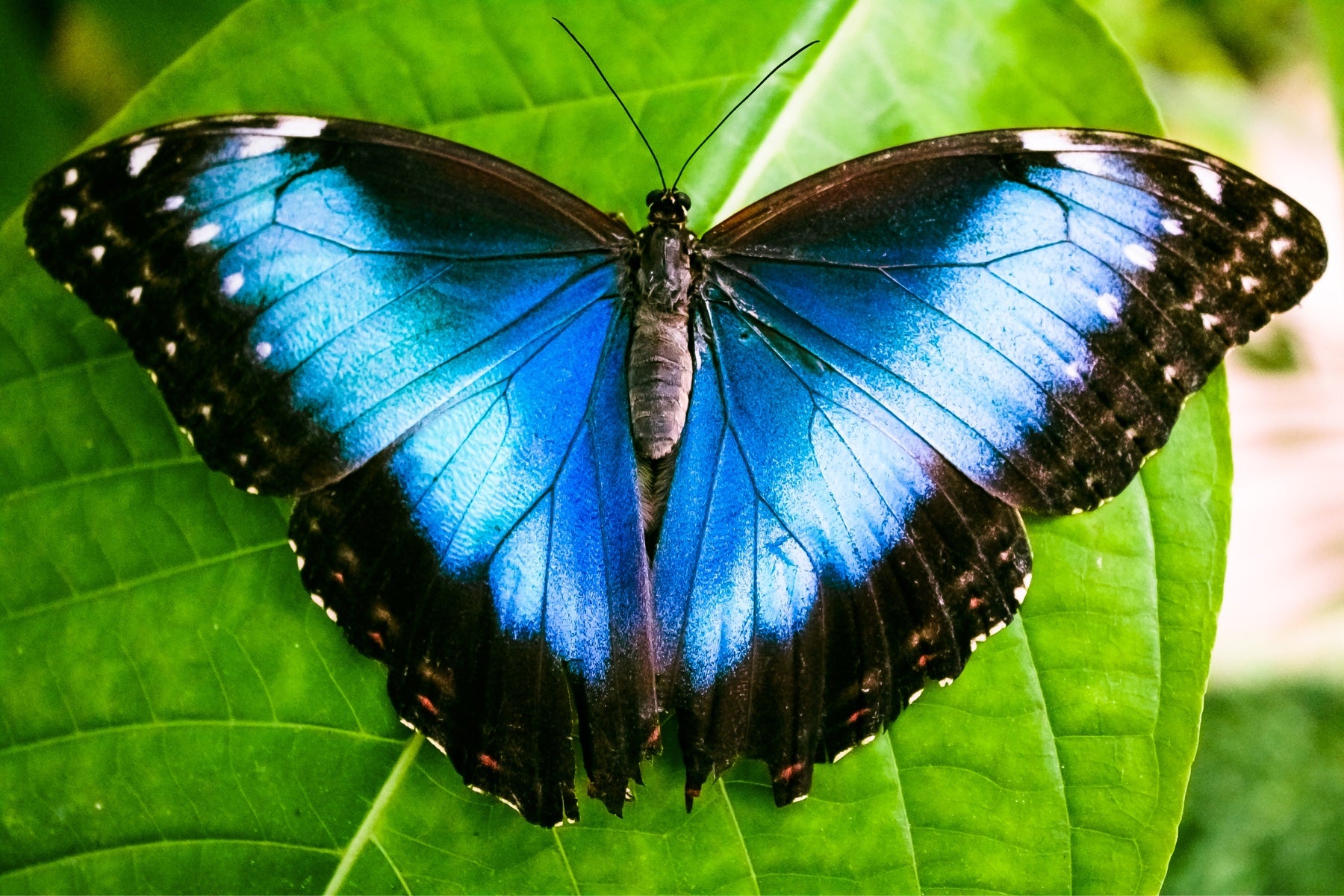
3. Blue Morpho Butterfly
The blue morpho butterfly is among the largest butterflies in the world. With its bright blue wings edged in black, this butterfly is unique in many ways. Their wings span from 5 to 8 inches, significantly larger than the average butterfly’s wingspan of 1 to 3 inches.
These butterflies live in tropical forests across Latin America, ranging from Mexico to Colombia. Most of the time, these vibrant butterflies will spend their days on the forest floor and in lower shrubs or trees of the understory with their wings tucked. During mating season, the butterflies will fly through all layers of the forest in a vibrant sea of blue.
Like many animals in rainforests, blue morpho butterflies are increasingly threatened by deforestation and habitat fragmentation. By continuing to plant trees in the world’s rainforests, we can ensure these beautiful butterflies have a home to generations to come.
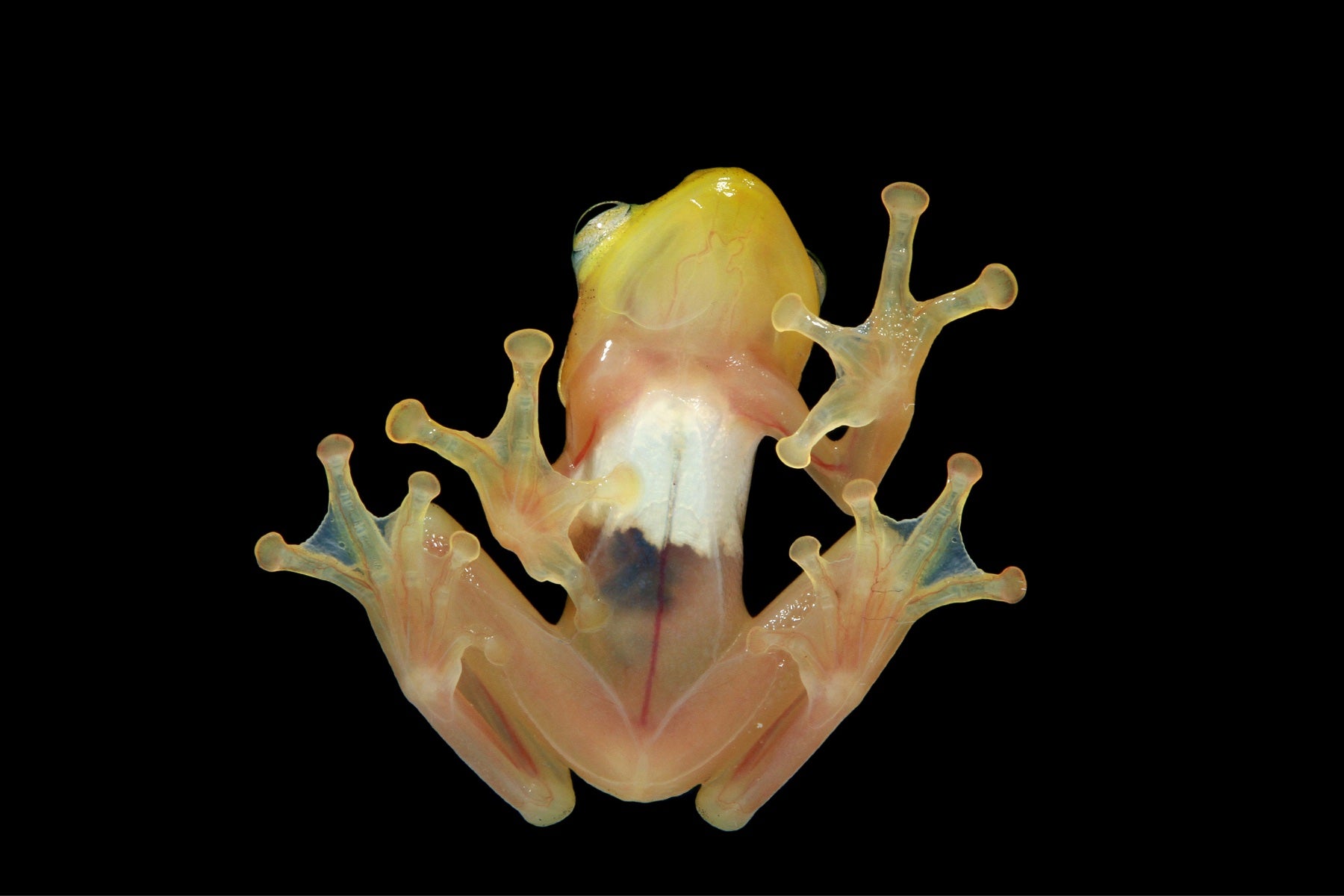
4. Glass Frog
Glass frogs are unique in many ways. While their topside appears the same as any typical frog, this amphibian is known for its translucent skin on the underside, appearing like glass. When a glass frog jumps from one leaf to another, their glass-like skin allows you to see their internal organs, sometimes even their beating heart.
These unique animals can be found in rainforests across Costa Rica, Colombia, Panama, and Ecuador. Male glass frogs tend to be exceptionally protective of their mates’ eggs. They watch the eggs 24/7, and they are even known to kick away wasps if they get too close to the egg clusters.
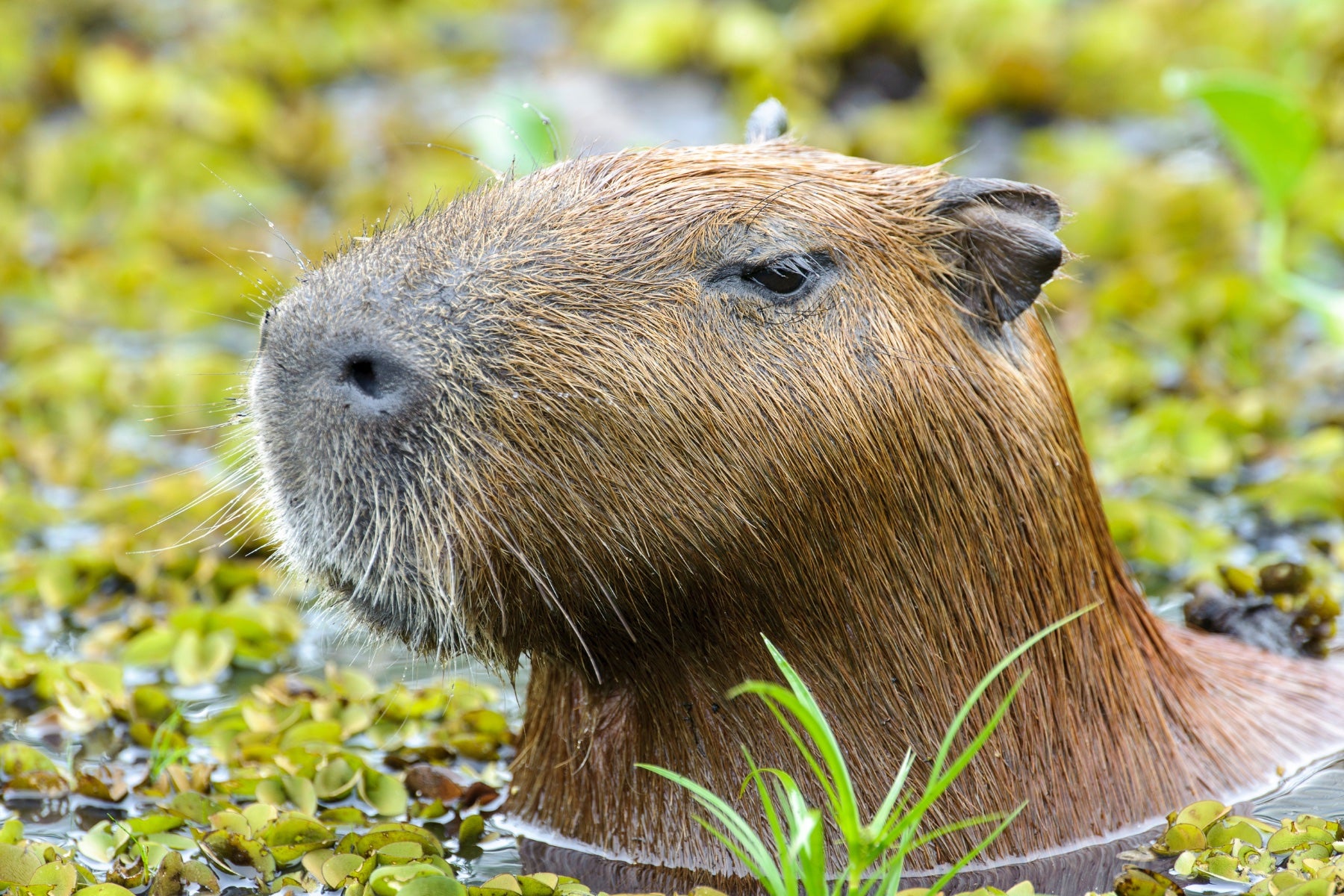
5. Capybara
The capybara is the world’s biggest rodent, and they are a living relative of the guinea pig. They are twice the size of a beaver, and they live throughout northern and central America. Similar to beavers, capybaras are semi-aquatic and are strong swimmers. Their bodies have adapted a pig-like shape that makes it easier for them to navigate bodies of water found in forests.
These giant rodents can live amongst a herd of nearly 40, but they also don’t mind going out alone. They are always very alert, watching for jaguars and other predators. Overall, their populations are considered to be stable, but there are some areas around the world where capybaras are severely threatened by human hunters.

6. Spider Monkey
Spider monkeys are among the largest New World monkeys, and they can be found primarily in tropical rainforests in central Mexico and Bolivia. They are known for long, lanky limbs which have earned them their name, resembling spider legs as they dangle from branch to branch. A spider monkey’s tail acts as a fifth limb, capable of grasping and making life in tree canopies that much easier.
These monkeys are known to be highly social, living in troops of up to 40 members. Typically, smaller groups will break off to forage for the entire clan, and many studies have shown that male and female spider monkeys often spend their time differently. Males will spend their days traveling and eating ripe fruits while females will spend more time resting and eating.
Unfortunately, much of their forest homes are being cleared for cattle ranching and agriculture, leaving many spider monkeys displaced. Many local awareness programs have been put into place to help protect these important species, attempting to protect their homes and forests for years to come.
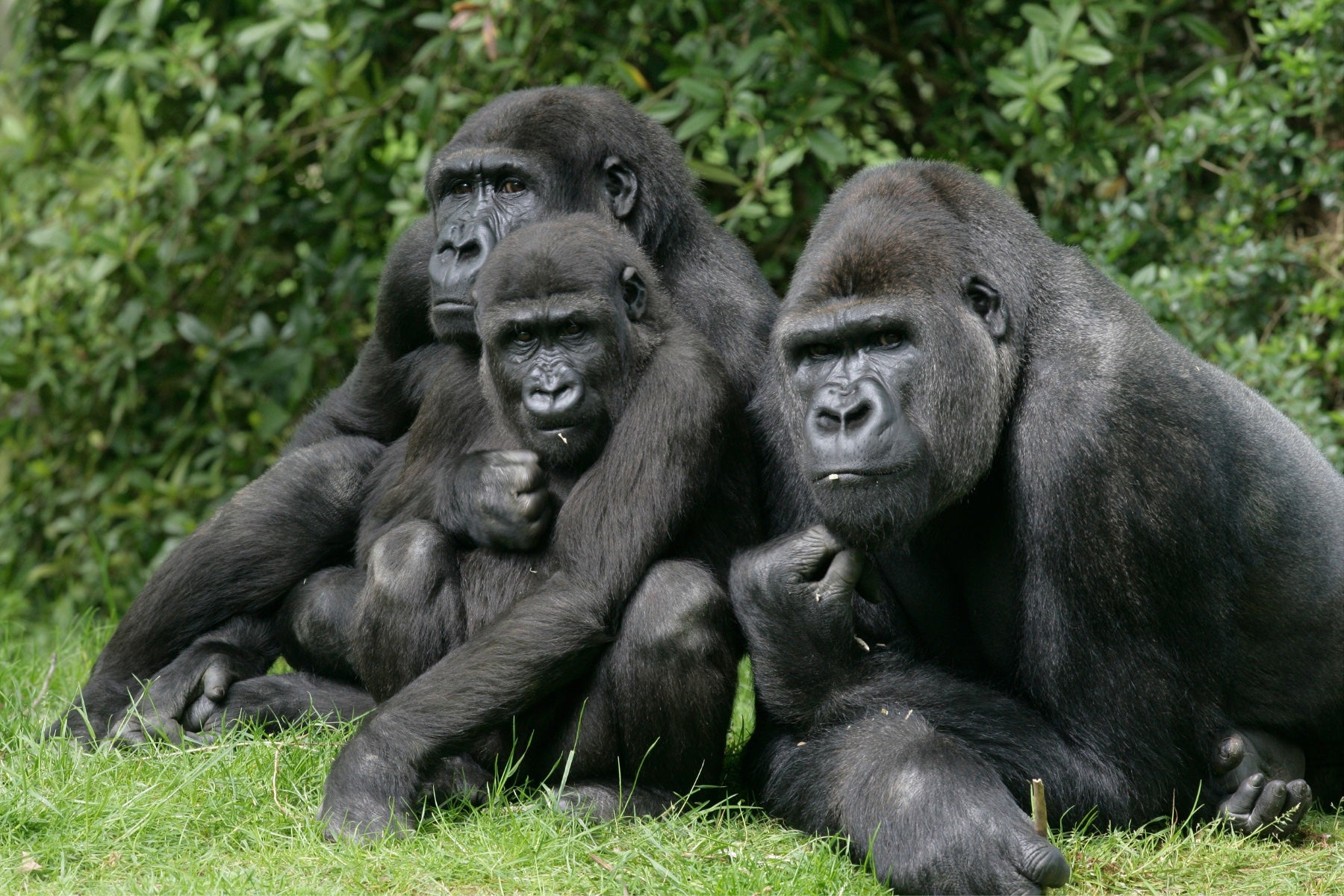
7. Mountain Gorilla
Gorillas are known to be our closest living relatives. We share about 98 percent of our DNA with these formidable animals. Mountain gorillas are the world’s biggest and most powerful living primates and can grow to be almost 500 pounds with a standing height of 4 to 6 feet.
Currently, there are a little more than 1,000 mountain gorillas on Earth, but their population numbers are slowly increasing. Mountain gorillas live in troops of 30 to 40 members with a dominant male, troop leader. The troop leader is usually distinguishable by the silver tint on its back, earning the common name silverback.
While these gorillas can climb trees, they are more commonly found on the ground with their fellow troop members. Female gorillas, much like humans, give birth to one infant after a nine month gestation. Unlike their large parents, gorilla newborns tend to only weigh around four pounds. For the next two years of their life, these infants will ride on their mothers’ backs until they are able to move about on their own. As the infants grow older, they become similar to human children, spending their days playing and getting into mischief.
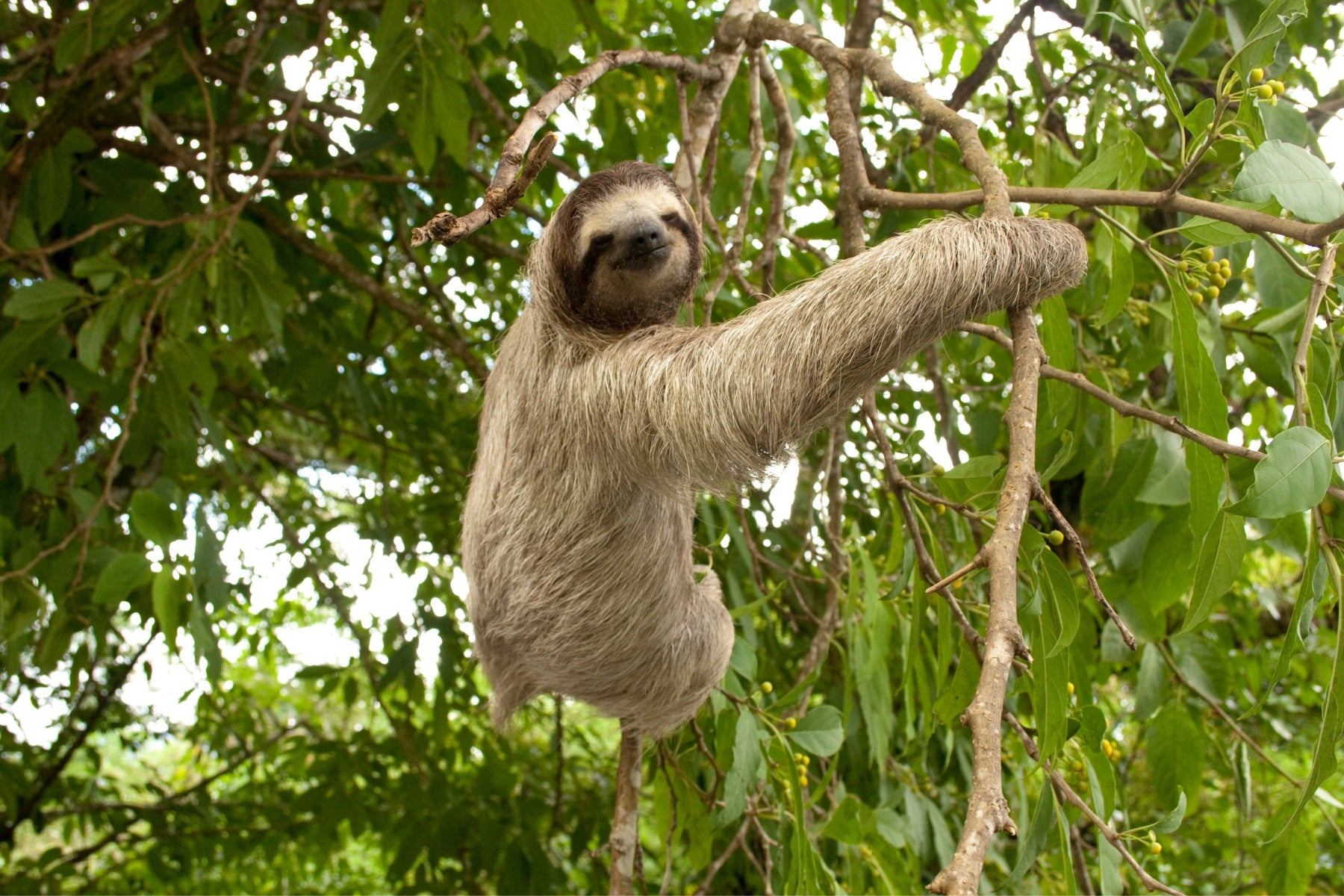
8. Three-toed Sloth
The slowest animal on Earth is the sloth. This allows sedentary algae to grow on the fur of these fascinating animals, giving them a greenish tint that allows them to camouflage amongst the rainforest trees of Central and South America.
The three-toed sloth is known for its long, prominent claws on each foot that make spending their days in tree tops easier. They often hang from branches with a powerful grip that is aided by their long claws. While awake, these sloths often remain motionless, and they spend 15 to 20 hours a day asleep.
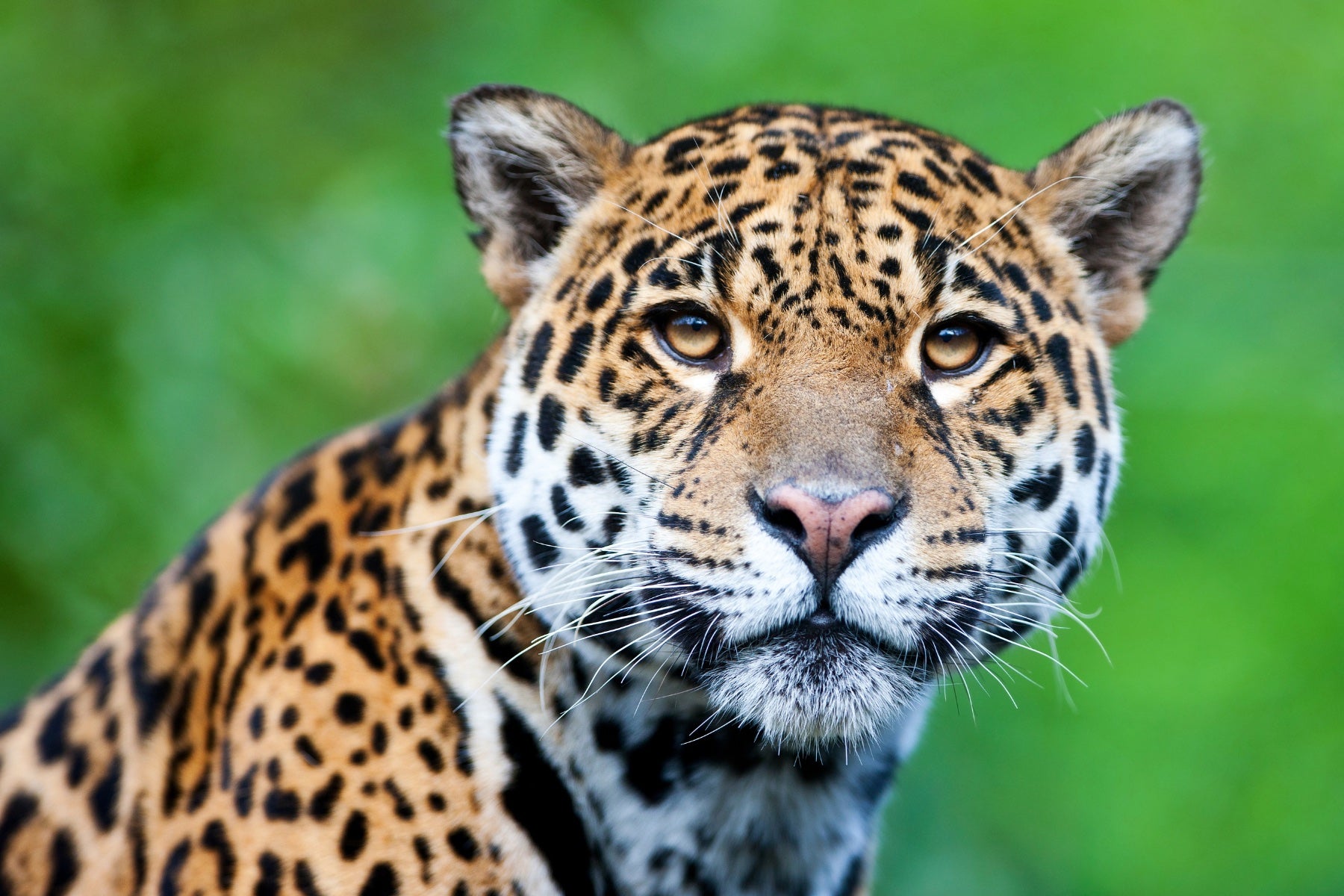
9. Jaguar
Jaguars are the only big cat in the Americas, and they are the third biggest wild cat in the world –– after lions and tigers. Jaguars resemble leopards, but jaguars’ spots are much more complex and typically have a dot in the center.
Cats of all sizes are known for their distaste for getting wet. Jaguars are the only known exception. Unlike their other feline cousins, jaguars are good swimmers, able to tread water to hunt aquatic animals.
Jaguars are also known to be solitary and territorial animals. They live alone, and they define their area by marking it with their claws and waste. Unfortunately, jaguars are also facing a threatening decrease in population as habitat fragmentation and poaching become more prevalent. There are many ongoing efforts to support and develop jaguar corridors to connect isolated populations.
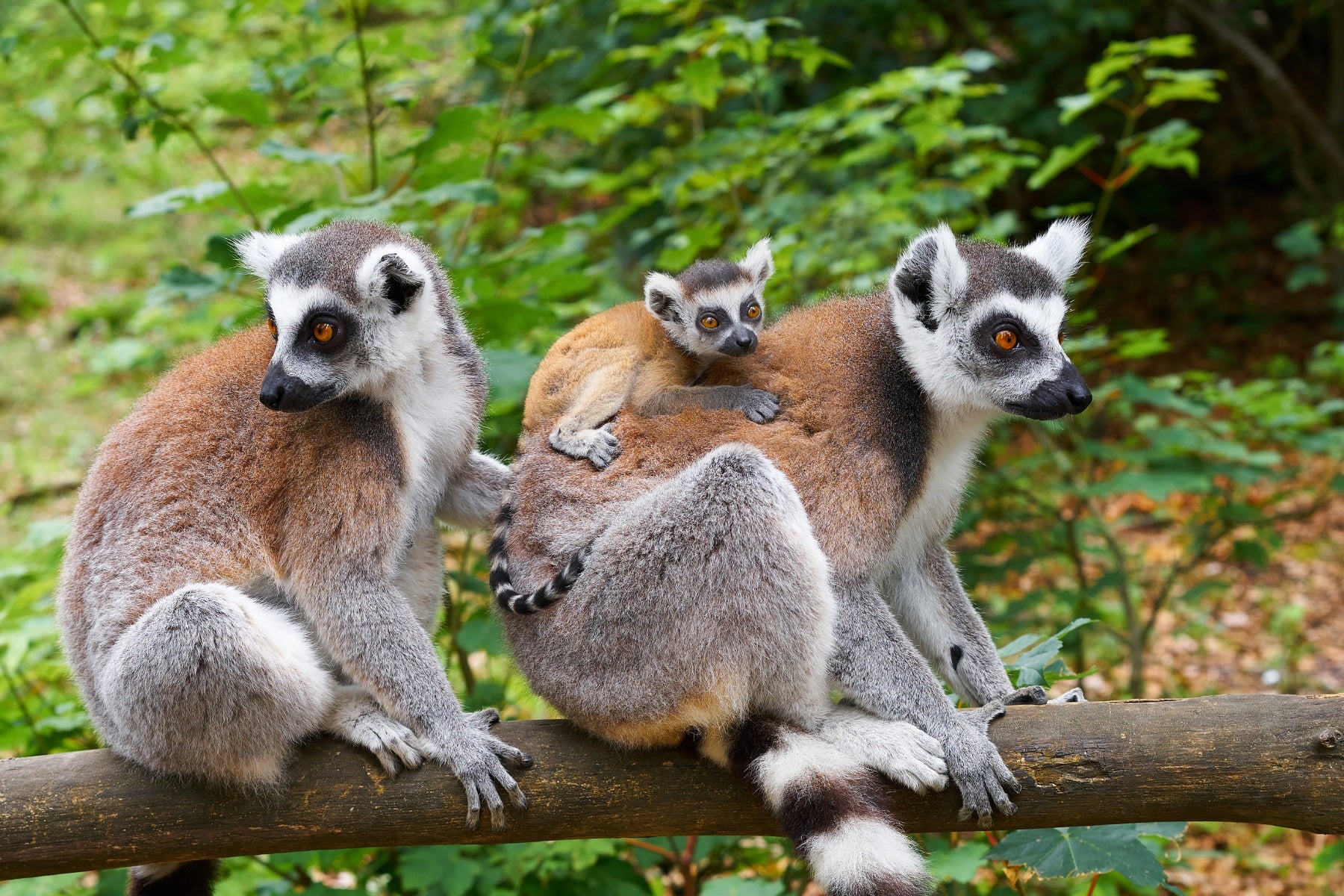
10. Ring-Tailed Lemur
Ring-tailed lemurs are primates that can only be found on the African island of Madagascar and other neighboring islands. These lemurs are well-known for their striped, black-and-white tail, making them unmistakable. Unlike their other primate cousins, lemurs cannot use their tail to grip, so they spend a lot of their time foraging for food on the forest floor when they’re not scaling trees.
Ring-tail lemurs tend to live in groups commonly known as troops. These troops can average about 17 members, but they can sometimes be home to as many as 30 lemurs. While both males and females reside in these troops, dominant females tend to rule them.
There are many amazing rainforest animals out there, and most of these species need our help to safeguard their habitats. You can make an impact in the world’s largest rainforest by planting trees in the Amazon!
